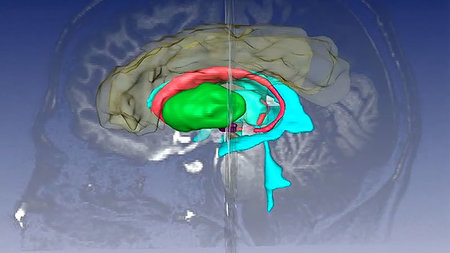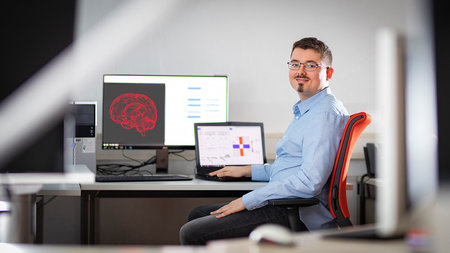Peri-saccadic space perception
When we look at a scene, our eyes move around several times per second. This rapid eye movement is called saccade and with every saccade, the retinal image changes. Nevertheless, we perceive our world as stable instead of as a jumping environment. To form this stable perception, we need anticipation of physical consequences of motor actions, accurate targeting of attention, and the ability to continuously integrate visual inputs with stored representations.
We have developed a neuro-computational model of peri-saccadic space perception based on predictive remapping and corollary discharge signals to explain several phenomena of vision such as perisaccadic mislocalization of briefly presented stimuli in darkness, saccadic suppression of displacement (SSD), predictive remapping, and updating of spatial attention. The model is located in the lateral intraparietal area (LIP) and is based on biological findings. Using gain fields and radial basis functions, the model simulates a stimulus position across eye movements using a discrete eye position signal and a corollary discharge.

Associated projects
BMBF grant "US-German collaboration on computational neuroscience". BMBF 01GQ1409 (2015-2018).
EU project SpaceCog "Neuro-Bio-Inspired Systems: Spatial Cognition". (2013-2016)
BMBF grant "Visuospatial Cognition". BMBF 01GW0653 (2007-2010)
Relevant Publications
Bergelt, J., Hamker, F.H. (2019)
Spatial updating of attention across eye movements: A neuro-computational approach
Journal of Vision, 19(7):10, 1-23. doi:10.1167/19.7.10
PDF-document
Ziesche, A., Bergelt, J., Deubel, H., Hamker, F.H. (2017)
Pre- and post-saccadic stimulus timing in Saccadic Suppression of Displacement - a computational model
Vision Research, 138:1-11. doi:10.1016/j.visres.2017.06.007
PDF-document
Bergelt, J., Hamker, F. H. (2016)
Suppression of displacement detection in the presence and absence of eye movements: A neuro-computational perspective.
Biological Cybernetics, 110:81-89. doi:10.1007/s00422-015-0677-z
PDF-document
Ziesche, A., Hamker, F.H. (2014)
Brain circuits underlying visual stability across eye movements - converging evidence for a neuro-computational model of area LIP.
Frontiers in Computational Neuroscience, 8(25), 1-15. doi:10.3389/fncom.2014.00025
PDF-document
Ziesche, A., Hamker, F. H. (2011)
A computational Model for the Influence of Corollary Discharge and Proprioception on the Perisaccadic Mislocalization of Briefly Presented Stimuli in Complete Darkness
Journal of Neuroscience, 31(48): 17392-17405. doi:10.1523/JNEUROSCI.3407-11.2011
PDF-document
Hamker, F. H., Zirnsak, M., Ziesche, A., Lappe, M. (2011)
Computational models of spatial updating in peri-saccadic perception
Phil. Trans. R. Soc. B (2011). 366, 554-571.
PDF-document
Zirnsak, M., Lappe, M., Hamker, F. H. (2010)
The spatial distribution of receptive field changes in a model of peri-saccadic
perception: predictive remapping and shifts towards the saccade target.
Vision Research. 50:1328-1337.
PDF-document
Hamker, F.H., Zirnsak, M., Calow, D., Lappe, M. (2008)
The peri-saccadic perception of objects and space.
PLOS Computational Biology 4(2):e21
PDF-document





